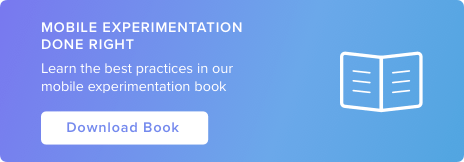Why is Transavia Winning the CRO Game?

Take a look at their testing mindset, process, and internal team dynamic.
Every year, Google holds a conference focused on sales conversions at their EMEA headquarters in Dublin. The theme for 2017 was “converting mobile consumers,” and two CRO (conversion rate optimization) presentations stood out for us in particular: Stuart Frisby from Booking.com & Vanja Mlaco from Transavia. Both companies play in the travel/tourism space and stress the importance of testing culture within their organizations.
“CRO is not a department. It’s a mindset.” — Vanja Mlaco
We recently published an article about how A/B testing is deeply ingrained within Booking.com’s approach to optimization. Transavia — a Dutch airline company — is also moving towards building a stronger internal testing culture, although it is a fairly recent shift.
In 2015, they revamped their website but didn’t test to see whether it led to increased conversions or higher user engagement. It soon became clear that instead of taking shots in the dark, it was time to justify new changes with data.
A recurring theme seems to be that smaller tests can have large impacts, and Transavia is riding on this trend. After all, good things come in small packages! In one experiment, they invested €20,000 but generated more than €4 million in revenue uplift. There was also an 8.4% increase in luggage mobile page touch rate, and a 2.3% increase in conversions on the payment options page after A/B testing.
The Process

This is how Transavia goes about their A/B tests — once they have an idea, they find a platform and someone to guide them through it, run tests, and finally assess their resources and methods.
So how exactly does Transavia apply testing to their overall process of development?
- A problem is identified; for example, customers are becoming frustrated with small luggage check-in procedures.
- An optimization backlog is created, with the generation of numerous potential test ideas.
- Ideas (such as offering 10 kg of free luggage to a sample group of customers) are prototyped and analyzed.
- A general development backlog is created, based on which ideas show promise.
Unlike Booking.com, Transavia doesn’t have the resources to test each every idea, and focuses only on those that have the most value. They also choose to outsource for a testing solution instead of building in-house. For smaller companies or those who want to dedicate more resources towards developing the product itself, finding an external tool is a good way to go.
Transavia is always taking a critical view of their own processes, and isn’t afraid to switch partners or old practices in order to improve.
Smells Like Team Spirit
Testing culture cannot be complete without the support and participation of the whole organizational team. Employee input is highly valued, and there is as much transparency as possible when it comes to data access. At Transavia, everyone is allowed to use the knowledge sharing tool for idea generation.
Transavia holds monthly update sessions where individuals speak about their recent achievements, and this activity really boosts overall input. In an A/B testing environment where only a fraction of ideas are developed down the road, this exercise works to keep employees continually motivated. Teams called CRO fleets are also tasked with optimization in every department. By having all levels of employees contribute, a multitude of issues can be identified; representatives that closely interact with customers understand their direct problems, while upper management can identify overarching company obstacles.
“Today the website, tomorrow the world.”
A company that recognizes the power of A/B testing is well-positioned for the future. This is applicable to all industries outside of travel, whether it be sports entertainment or retail e-commerce. Here at Taplytics, we’ve seen some amazing results from our clients due to their willingness to experiment and back up hypotheses with concrete data. Transavia’s approach to optimization is something we hope to see more companies adopting as mobile interactions grow to define the consumer experience.
So, what are some key takeaways?
•Learn but don’t copy — be original with your experiments
•Make full use of your team
•Continually iterate on your own practices
Check out the presentation below:

